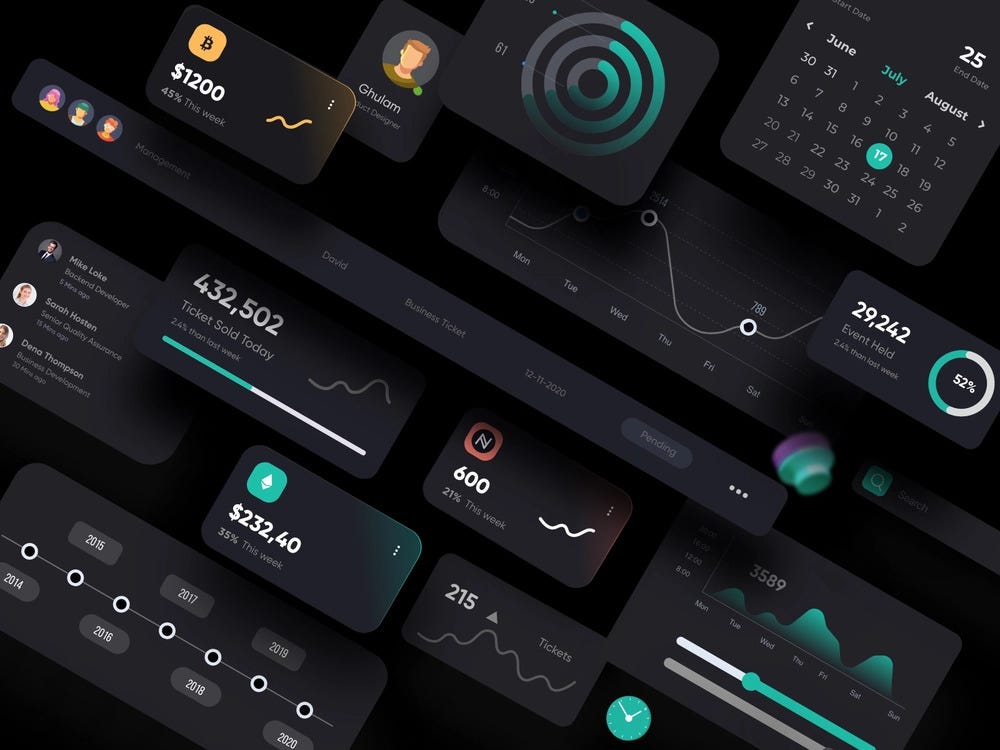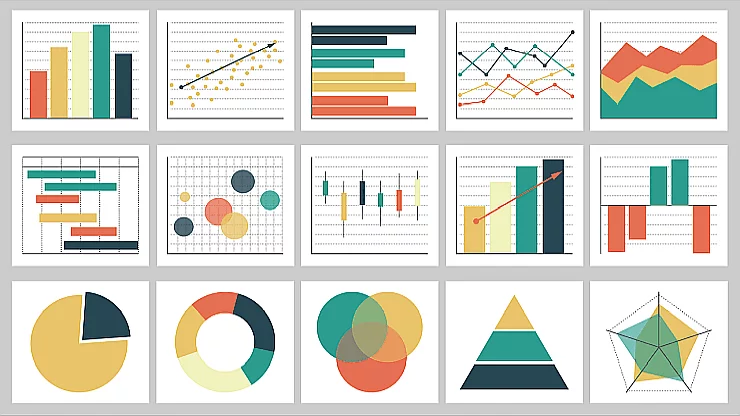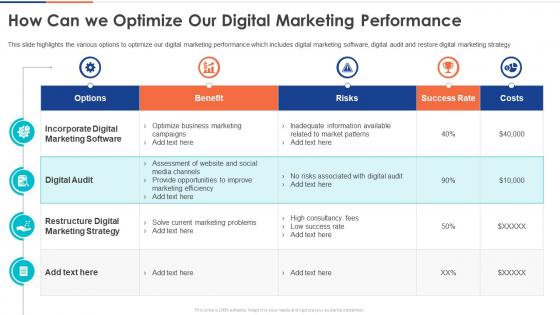Maintaining Brand Authenticity with AI-Generated Visuals
The ultimate guide to balancing innovation with consistent brand identity
In today's rapidly evolving digital landscape, I've found that maintaining a consistent brand identity while leveraging AI-generated visuals is both a challenge and an opportunity. This comprehensive guide explores how to harness AI's creative potential without sacrificing your brand's authentic voice.
Understanding Brand Identity & AI Visual Generation
In my years working with brands transitioning to AI-generated visual content, I've witnessed the remarkable evolution of brand identity in the digital era. Visual consistency has never been more critical—or more challenging—than it is today. When brands adopt AI tools for visual creation, they face a fundamental question: how do we innovate while remaining authentic to our established identity?

Key Challenges in AI Visual Implementation
When implementing AI-generated visuals, brands typically face these core challenges:
flowchart TD
A[Brand Identity] --> B[AI Implementation]
B --> C{Key Challenges}
C --> D[Consistency Maintenance]
C --> E[Technical Limitations]
C --> F[Creative Control]
C --> G[Scale vs. Quality]
style A fill:#FF8000,stroke:#333,stroke-width:1px,color:white
style B fill:#42A5F5,stroke:#333,stroke-width:1px
style C fill:#FF8000,stroke:#333,stroke-width:1px,color:white
The balance between innovation and authenticity isn't just a philosophical question—it has real business implications. Visual personal brand story development requires careful consideration of how new AI-generated assets align with your established visual language.
I've found that many organizations struggle with articulating their brand vision to AI systems, often getting lost in technical complexities. This is where conversation-based approaches shine. PageOn.ai's intuitive interface allows brand managers and designers to describe their vision in natural language, eliminating the need for complex prompt engineering or technical expertise.
The AI Brand Paradox
The more personalized and varied your AI-generated visuals become, the greater the risk of diluting your brand identity. Success lies in finding the sweet spot between creative flexibility and brand consistency.
Establishing Your Brand's Visual Foundation for AI Integration
Before diving into AI-generated visuals, I always advise clients to create comprehensive brand guidelines specifically tailored for AI implementation. This foundation is crucial for maintaining consistency across all generated assets.
Core Visual Elements for Brand Consistency
When establishing your brand's visual foundation for AI integration, prioritize these core elements based on their impact on brand recognition:
In my experience, documenting your brand's color psychology is particularly important for AI systems. Colors evoke specific emotions and associations, and AI tools need clear parameters to maintain these connections consistently.
Typography Hierarchy
Define not just font families, but specific weight combinations, spacing rules, and contextual usage guidelines that AI can follow.
Composition Principles
Document your brand's approach to visual balance, white space usage, and element positioning to maintain a consistent visual language.
When working with AI image generators for business, template systems become essential. PageOn.ai's AI Blocks feature allows me to create modular template systems that maintain brand consistency while allowing for controlled variations. This approach ensures that no matter how many visuals you generate, they'll always feel like part of the same brand family.

Strategic Implementation of AI in Your Brand's Visual Ecosystem
I've learned that successful AI visual integration begins with clearly defined objectives. Before generating a single image, ask yourself: What specific role will these AI-generated visuals play in your brand's ecosystem? Are they for social media, product photography, or internal documentation?
The strategic implementation process typically follows this path:
flowchart TD
A[Define Objectives] --> B[Establish Guardrails]
B --> C[Create Template System]
C --> D[Initial Generation]
D --> E[Review & Refine]
E --> F[Scale Implementation]
F --> G[Monitor & Audit]
G --> H{Meets Brand Standards?}
H -->|Yes| I[Deploy Visuals]
H -->|No| E
style A fill:#FF8000,stroke:#333,stroke-width:1px,color:white
style H fill:#FF8000,stroke:#333,stroke-width:1px,color:white
style I fill:#42A5F5,stroke:#333,stroke-width:1px
Balancing Personalization with Brand Consistency
The power of AI-generated visuals lies in personalization—creating unique content for different audiences, campaigns, or contexts. However, as marketing experts highlight, too much variation can dilute your brand identity. The key is maintaining core brand elements while allowing controlled personalization.

I've found that developing a template system is essential for maintaining this balance. These templates should define:
- Which elements must remain consistent across all visuals
- Which elements can vary within defined parameters
- Specific rules for how variations can be applied
- Clear examples of acceptable vs. unacceptable variations
PageOn.ai's Deep Search capability has transformed how I approach brand consistency. The system can automatically find and integrate on-brand visual elements, ensuring that even highly customized visuals maintain your core brand identity. This eliminates the manual work of checking each generated image against brand guidelines.
Pro Tip: The 70/30 Rule
I recommend maintaining at least 70% consistency in core brand elements while allowing up to 30% variation for personalization. This ratio ensures your brand remains recognizable while still delivering customized experiences.
Technical Considerations for Brand-Aligned AI Visuals
Selecting the right AI image generation platform is crucial for achieving brand-aligned results. In my work with various platforms, I've identified several technical factors that significantly impact brand consistency.
Platform Selection Criteria
| Feature | Why It Matters | Brand Impact |
|---|---|---|
| Fine-tuning Capabilities | Allows model customization to recognize brand elements | High - Creates truly brand-specific outputs |
| Style Consistency | Maintains visual language across multiple generations | Critical - Ensures cohesive brand appearance |
| Color Accuracy | Precisely matches brand color palette | Essential - Colors are primary brand identifiers |
| Template Support | Allows creation of reusable brand frameworks | High - Ensures structural consistency |
| Asset Integration | Incorporates existing brand assets into new visuals | Medium - Maintains visual continuity |
For brands with unique visual identities, I often recommend exploring custom AI model training. While more resource-intensive, this approach can significantly improve how well AI systems recognize and implement your specific brand elements.
The Role of Prompt Engineering
In my experience, prompt engineering is both an art and a science when it comes to maintaining brand consistency. AI graphic generators rely heavily on how well you can articulate your brand requirements.

What makes PageOn.ai particularly valuable in this context is its ability to transform fuzzy brand concepts into structured, consistent visual outputs. Instead of requiring technical prompt expertise, it allows brand managers to describe their vision in natural language and handles the technical translation internally.
Effective Brand Prompt Structure
- Begin with core brand descriptors (modern, playful, sophisticated)
- Specify exact color values (HEX/RGB codes)
- Define composition requirements (rule of thirds, centered focus)
- Include style references (minimalist, photorealistic, illustrated)
- Add brand-specific elements that must be included
When working with AI graphic image generation tools, I've found that even small changes in prompt structure can significantly impact how well the output aligns with your brand identity.
Quality Control and Human Oversight in AI Visual Generation
In my years working with AI-generated visuals, I've learned that human oversight remains essential, no matter how advanced the technology becomes. Implementing effective review processes ensures that AI-generated assets truly represent your brand.
An effective quality control workflow for AI-generated brand visuals:
flowchart TD
A[Initial AI Generation] --> B[Automated Brand Checks]
B --> C{Passes Basic Criteria?}
C -->|Yes| D[Designer Review]
C -->|No| E[Adjust Parameters]
E --> A
D --> F{Designer Approval?}
F -->|Yes| G[Brand Manager Review]
F -->|No| H[Designer Edits]
H --> D
G --> I{Final Approval?}
I -->|Yes| J[Asset Library]
I -->|No| K[Revision Request]
K --> A
style C fill:#FF8000,stroke:#333,stroke-width:1px,color:white
style F fill:#FF8000,stroke:#333,stroke-width:1px,color:white
style I fill:#FF8000,stroke:#333,stroke-width:1px,color:white
style J fill:#42A5F5,stroke:#333,stroke-width:1px
Regular Auditing Systems
Beyond individual asset reviews, I recommend implementing regular auditing systems to ensure visual consistency across all channels. These audits should evaluate:
- Color consistency across different platforms and media types
- Typography usage and hierarchy maintenance
- Compositional patterns and their alignment with brand guidelines
- Overall visual cohesion across campaigns and touchpoints

Designer Integration in the AI Workflow
In my experience, the most successful implementations of AI-generated visuals involve designers throughout the process—not just at the review stage. Designers should:
Help Define Parameters
Leverage designers' expertise when establishing the technical parameters and creative boundaries for AI systems.
Create Template Systems
Work with designers to develop the foundational templates that AI will use for generating variations.
Provide Iterative Feedback
Establish channels for designers to provide ongoing feedback that improves the AI's understanding of brand aesthetics.
Post-Generation Refinement
Allow designers to make final refinements to AI-generated assets, combining technological efficiency with human creativity.
PageOn.ai's agentic capabilities have transformed how my team approaches this collaborative process. The system can interpret brand intent and transform it into polished, on-brand visual reality, while still allowing for designer input at critical junctures. This creates a more efficient workflow without sacrificing quality or brand alignment.
Human-AI Collaboration Best Practice
I've found that the most effective approach is to use AI for initial generation and variation creation, while reserving human oversight for strategic decisions and final approval. This leverages the strengths of both AI efficiency and human creative judgment.
Case Studies: Successful Brand Identity Maintenance with AI
Throughout my career, I've observed how various brands have successfully integrated AI-generated visuals while maintaining their distinctive identities. These real-world examples provide valuable insights into effective strategies.
Coca-Cola: Balancing Innovation with Iconic Recognition

Coca-Cola's collaboration with OpenAI demonstrates how established brands can embrace AI innovation while preserving their iconic visual identity. The key strategies I observed in their approach included:
- Maintaining strict adherence to their signature red and white color palette
- Ensuring the distinctive bottle shape remained recognizable even in abstract interpretations
- Using AI to create variations that felt fresh while respecting brand heritage
- Implementing a rigorous review process involving both AI specialists and brand guardians
Fashion Retail: Authentic Product Representation
In the fashion industry, I've worked with retailers using AI for seasonal imagery while ensuring authentic product representation. One particularly effective approach I've seen involves:
Effectiveness of different AI implementation approaches in fashion retail:
The most successful fashion retailers I've worked with use a hybrid approach, combining AI efficiency with human oversight specifically focused on product authenticity. Designer review ensures that clothing textures, draping, and materials remain true to real-life counterparts, which is essential for maintaining customer trust.
B2B Companies: Global Consistency with Local Relevance
I've consulted with several B2B companies leveraging AI for consistent visual communication across global markets. The most successful approach I've observed includes:
Core Template System
Developing a foundational visual framework that maintains consistent brand elements across all markets.
Cultural Adaptation Layers
Adding market-specific visual elements that resonate locally while preserving the global brand identity.
Centralized Oversight
Implementing global brand governance while allowing controlled regional customization.
PageOn.ai: Streamlining Visual Identity Management
In my consulting work, I've seen numerous organizations leverage PageOn.ai to streamline their visual identity management. One particularly effective case involved a multi-brand corporation that used PageOn.ai to:
- Create distinct visual templates for each sub-brand while maintaining corporate identity elements
- Develop a centralized asset library that maintained brand consistency across departments
- Implement automated brand checks that flagged potential inconsistencies before publication
- Generate market-specific variations that respected both global brand guidelines and local preferences

Customization vs. Consistency: Finding the Perfect Balance
Throughout my career in brand management, I've found that the tension between customization and consistency represents one of the most challenging aspects of implementing AI-generated visuals. Finding the right balance is essential for brand success.
Strategies for Hyper-Personalization Without Diluting Brand Identity
The spectrum of personalization approaches and their impact on brand consistency:
flowchart TD
A[Brand Identity Foundation] --> B[Personalization Strategy]
B --> C[Fixed Core Elements]
B --> D[Flexible Secondary Elements]
C --> E[Logo & Typography]
C --> F[Color Palette]
C --> G[Visual Style]
D --> H[Content Themes]
D --> I[Image Subjects]
D --> J[Contextual Elements]
E & F & G --> K[Consistent Brand Recognition]
H & I & J --> L[Personalized Relevance]
K & L --> M[Balanced Brand Experience]
style A fill:#FF8000,stroke:#333,stroke-width:1px,color:white
style K fill:#FF8000,stroke:#333,stroke-width:1px,color:white
style L fill:#42A5F5,stroke:#333,stroke-width:1px
style M fill:#66BB6A,stroke:#333,stroke-width:1px
I've developed a strategic framework for audience-specific visual adaptations that maintain core brand elements. This approach involves:
Elements to customize vs. maintain for different audience segments:
In my experience with scientific advertising visual AI, the data clearly shows that maintaining consistency in core brand elements while allowing personalization in contextual elements delivers the best engagement results.
Geographic and Cultural Considerations
When working with global brands, I've found that cultural considerations in AI-generated visuals are crucial. Effective strategies include:
- Researching cultural color associations and adapting secondary palette elements accordingly
- Adjusting visual composition to match cultural reading patterns and aesthetic preferences
- Incorporating culturally relevant imagery and symbols while maintaining brand consistency
- Testing AI-generated visuals with local audiences before wide-scale implementation

PageOn.ai's Vibe Creation feature has been invaluable in my work with global brands. It allows for the generation of culturally relevant visuals that still feel authentic to the core brand. This capability bridges the gap between global consistency and local relevance.
The 3C Framework for Balanced Customization
In my consulting practice, I recommend following the 3C Framework: Core (elements that never change), Controlled (elements that can vary within defined parameters), and Creative (elements with maximum flexibility). This structured approach ensures brand recognition while allowing meaningful personalization.
Future-Proofing Your Brand's Visual Identity in an AI-Driven Landscape
As AI capabilities continue to evolve rapidly, I believe that future-proofing your brand's visual identity requires both strategic foresight and technical flexibility. Based on my experience and industry research, several emerging trends will shape how brands use AI-generated visuals.
Emerging Trends in AI-Generated Visual Content
Dynamic Brand Systems
Responsive brand identities that adapt to context while maintaining core recognition elements.
Real-Time Personalization
Visuals that adapt instantly based on user behavior, preferences, and environmental factors.
Multi-Modal Brand Experiences
Integrated visual, audio, and interactive elements that create cohesive brand experiences across touchpoints.
Adaptive Brand Governance
AI systems that actively monitor and maintain brand consistency across decentralized creation points.
To prepare your brand guidelines for evolving AI capabilities, I recommend a modular approach that separates fundamental brand principles from specific implementation techniques. This allows you to maintain core identity elements while adapting to new technological possibilities.
Predicted evolution of AI capabilities in brand visual creation:
Ethical Considerations and Transparency
As AI-generated visuals become increasingly sophisticated, ethical considerations become more important. In my consulting practice, I advise brands to:
- Develop clear policies on disclosing AI-generated content when appropriate
- Ensure AI systems don't perpetuate harmful stereotypes or biases in visual representation
- Consider the environmental impact of large-scale AI visual generation
- Respect intellectual property and creative attribution in AI training and outputs

PageOn.ai's continuous innovation supports evolving brand identity needs through its adaptive platform approach. Rather than locking brands into current technological capabilities, it evolves alongside AI advancements, ensuring your visual identity system remains future-ready.
Future-Ready Brand Strategy
I recommend developing a tiered brand guideline system with evergreen principles at the top level, medium-term application guidelines in the middle, and technology-specific implementation guides at the lowest level. This structure allows you to update implementation details as AI capabilities evolve without disrupting your core brand identity.
Transform Your Visual Brand Expression with PageOn.ai
Ready to maintain perfect brand consistency while leveraging the power of AI-generated visuals? PageOn.ai's intuitive platform helps you create stunning visual content that stays true to your brand identity—no technical expertise required.
Start Creating with PageOn.ai TodayFinal Thoughts: Balancing Innovation and Identity
Throughout my journey in brand management and AI visual implementation, I've come to appreciate that successful brand identity maintenance isn't about restricting AI's capabilities—it's about channeling them strategically. The brands that thrive in this new landscape will be those that establish clear visual foundations, implement thoughtful governance systems, and remain adaptable to emerging technologies.
As AI-generated visuals continue to evolve, the fundamental principles of strong brand identity remain constant: consistency, authenticity, and meaningful connection with your audience. By establishing the right systems and partnerships today, your brand can leverage AI's creative potential while maintaining the distinctive visual identity that sets you apart.
PageOn.ai represents a new approach to this challenge—one that bridges the gap between creative vision and technical execution. By translating your brand concepts into consistent visual reality through intuitive, conversation-based interfaces, it empowers brands to maintain authenticity while embracing innovation.
The future of brand visual identity isn't about choosing between human creativity and AI efficiency—it's about finding the perfect synthesis of both. With the right approach, AI-generated visuals can become your brand's greatest asset in creating meaningful, consistent connections with your audience.
You Might Also Like
Mastering Visual Harmony: Typography and Color Selection for Impactful Presentations
Learn how to create professional presentations through strategic typography and color harmony. Discover font pairing, color theory, and design principles for slides that captivate audiences.
Mastering FOMO Psychology: Creating Irresistible Business Pitch Strategies | PageOn.ai
Learn how to leverage FOMO psychology in your business pitches to drive urgent action. Discover proven strategies for creating authentic scarcity, exclusivity, and urgency that converts.
Transform Raw Text Data into Compelling Charts: AI-Powered Data Visualization | PageOn.ai
Discover how AI is revolutionizing data visualization by automatically creating professional charts from raw text data. Learn best practices and real-world applications with PageOn.ai.
Visualizing Fluency: Transform English Learning for Non-Native Speakers | PageOn.ai
Discover innovative visual strategies to enhance English fluency for non-native speakers. Learn how to transform abstract language concepts into clear visual frameworks using PageOn.ai.
